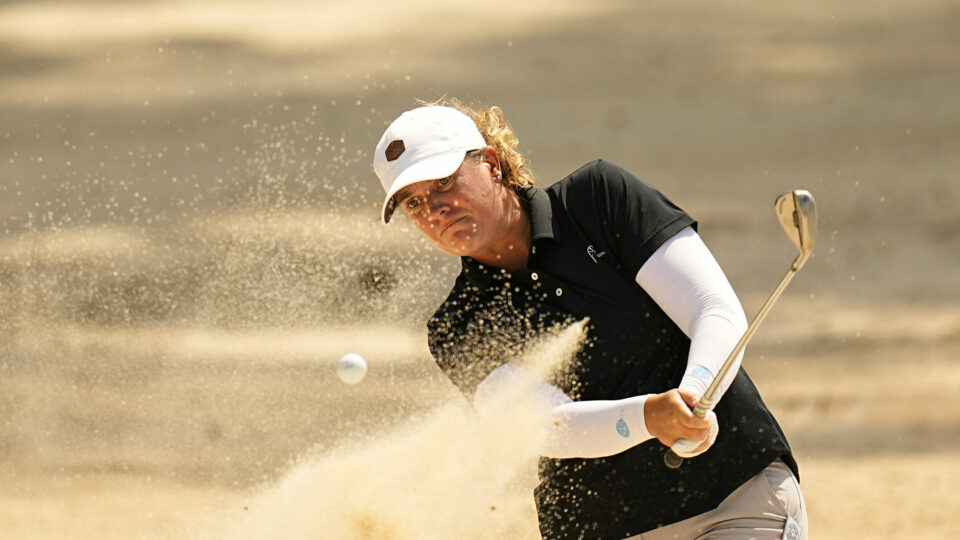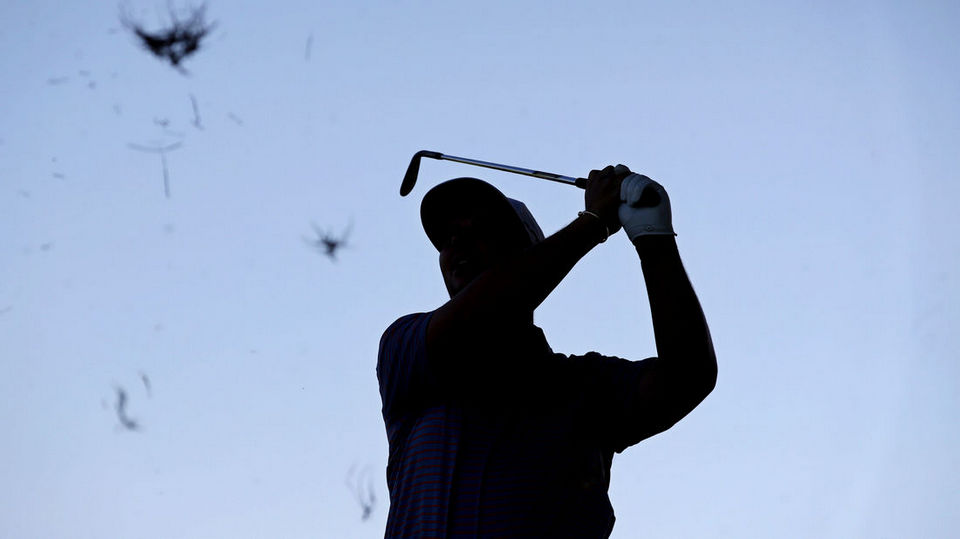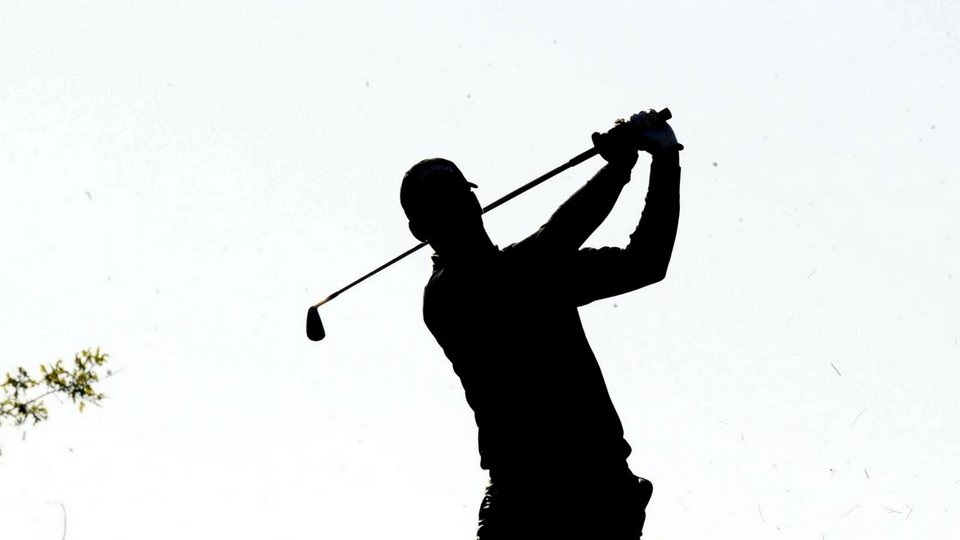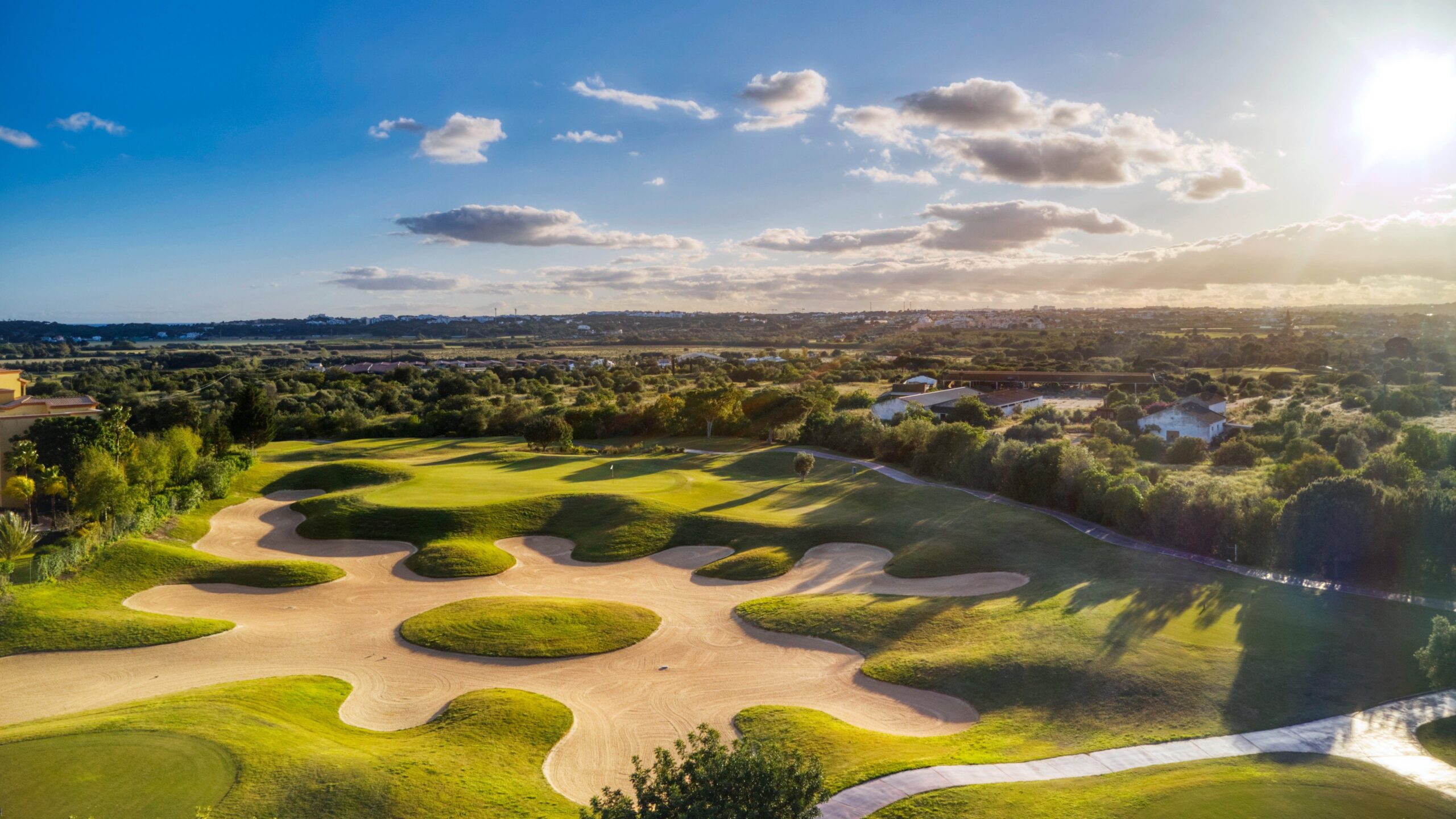Tuition
Hitting the Highs and Lows
by Denis Pugh, featuring World Cup winner Edoardo MolinariMoving to the arena of the short game, the other half of Italy's winning duo - Francesco's older brother Edoardo - demonstrates the pro technique for playing two vital scoring shots: the low spinny pitch and the super-soft, high-flying flop shot. Studying the sequences and comparing the positions in these very different swings will reveal the secrets to mastering these skills. The most important thing I would stress is that in both of these shots (and chipping/ pitching generally), wrist action must be kept to a minimum. Good wrist action softens the stroke - it does not make it.
A fluent hand/wrist action guards against your movements being 'wooden'. Typically, I see a lot of amateurs who over-involve the wrists in the takeaway, in the change of direction and, of course, at impact (the temptation to try to lift the ball into the air on the higher shots). A fundamental premise of the short game skills you are about to study is that you 'set' the loft at address and then influence the ball flight with the way you return that loft at impact.
'Quiet' wrists, active knees
As Edoardo prepares to play a low, spinning greenside pitch shot, the first thing to notice is that he is actually using a fairly lofted club. It is the way he sets up to the ball that dictates the nature of the strike and trajectory, not the loft: his hands are set forward, leaning the shaft gently towards the target, while the ball is played slightly back in what is a very narrow stance. His weight favours the left side, absorbed by the flex in the left knee.
This is a set-up position designed to produce a controlled stroke that delivers a crisp downward strike on the ball for a low trajectory and heavy backspin.
Looking at the technique itself, the backswing is notably wide, and going after that shape enhances the feeling of playing this shot with 'quiet' hands and wrists. There is no leg action as such; the feeling you want to have is that the knees just push forward as you return the club in the downswing so that your weight is on the left side at impact.
For the tour pro this is a staple shot, one that is often used on the longer par fives - holes out of reach for even these guys - an aggressive, pin-seeking shot played when you have a fair bit of green to work with or perhaps into a wind.
Visualisation of the shot is vitally important - the trajectory is low and the ball flies with heavy spin, so you have to identify your landing area and practice until you have a real sense of feel for the distance the ball will travel upon first hitting the green.
To the casual observer it might look like a player has hit it too hard, perhaps a little thin... that is until the ball bounces, checks and comes to a halt by the flag!
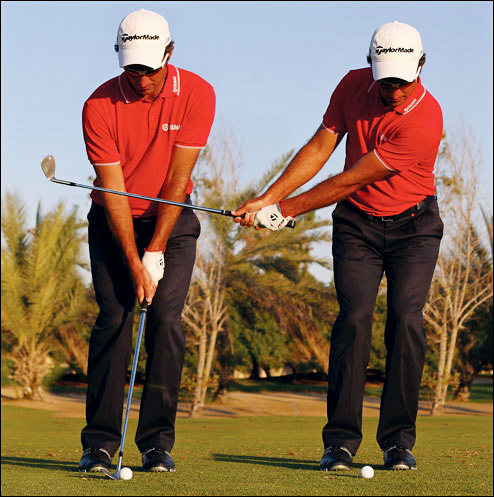
Take a comfortably narrow stance and ease your weight into the left side. With the ball back, the hands lean the shaft toward the target - clubshaft and left arm more or less in a straight line.
Weight remains on that left knee as the stroke is made by the rotation of the arms/ upper body. Wrists are 'soft', but not actively involved in making the backswing.

Subtle knee action is key to this technique; through the downswing, the knees work towards and then left of the target, promoting the downward strike on the ball. Note the hands lead the club all the way through.
Release the loft to play the ultra-soft high, floating, flop-shot
Once again the set up is the key to the execution and success of this high-risk/high-value shot. And immediately the contrast is obvious when you look at this sequence and compare like-for-like images with the low pitch on the previous spread. At the set up, Edoardo now has the ball pushed way forward, the stance is a little wider, and the loft is set way open as he lays the club behind the ball.
[To play the extreme version of this shot, the hands can even be behind the ball at the set up, with the shaft leaning away from the target - more experienced players should experiment with this. The practice ground trick of having the ball pop up almost vertically and catching it as you take a step towards the target in the same motion is one most tour players can pull off, and learning how to do this gives you wonderful feel for your swing and the clubface.]
Even though this feels (and appears in these pictures) like a much wristier swing, Edoardo's focus is on creating a wide sweep with the arms working in tandem with the rotation of the upper body, while his overall swing sensation is to keep the knees as quiet as possible and keeping his weight behind the ball as he swings through to a finish (you'll never play this shot if you get ahead of it!!).
When we work on elements of technique, the most important feeling is that the upper body is turning through impact and keeps on turning all the way to the finish. The hand/arm action is then coordinated with that body turn. The great danger (and common fault among amateurs) is that the body stops turning and the hands carry on independently, flicking at the ball. That leads to all sorts of inconsistency.
The impact position here is fantastic, and full of all the clues you need to take away and work on your own technique. In the moments immediately through impact, the feeling you want to cultivate is that the right hand works underneath the left, so that as you arrive at the finish the palm of the right hand faces directly up to the sky. This will influence the natural rotation of the forearms in a full release - totally in contrast to the low shot, where the release was held off'.As I mentioned earlier, the problem for many amateurs is that they believe this type of shot requires a lot of wrist action, often picking the club up very early in the takeaway and destroying any hope of creating width in the backswing. So take your cue from Edoardo, and discipline yourself to set the loft at address and then trust it as you work on a controlled technique that returns that loft beneath the ball. The more accomplished you get at this the less divot you will take and the better will be the quality of the strike.
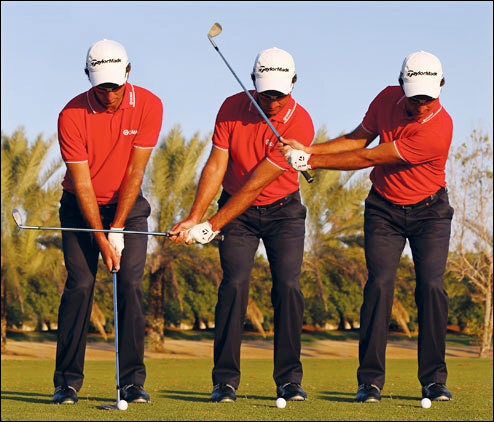
Width established early as Edoardo turns and extends hands, arms and the club in the backswing - the key is to take the wrists out of the equation.
Wrists remain 'quiet' - the length of the swing is controlled by the rotation of the shoulders/upper body.

Look at how flat the clubface is here as it is released under the ball - maximum loft has been applied!
Natural release of the hands/forearms is encouraged as the body rotates through and the club swings freely to the finish (gripping well down the club helps you do this, too).
During practice I will often hold out a cane like this to challenge Edoardo's skills and see how quickly he can get the ball to rise.
From this angle you get a great appreciation of the way in which the body rotates all the way through the shot to finish facing left of the target. The loft on the clubface is maintained throughout, and at the finish the palm of the right hand mirror's the position of the clubface, looking up towards the sky.
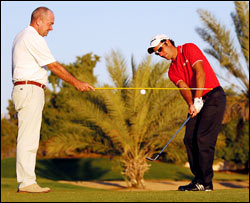
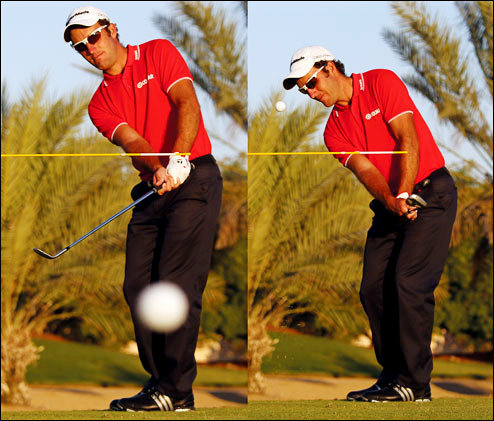
THE LOW KNOCK-DOWN These comparative views of the finish position reveal the key areas of technique that you have to work on.
In the case of the low spinner here, you can sense there's been no release of the right wrist - the club is said to be 'held off', which minimises the loft. With this advanced technique, the choice of club is generally a lofted wedge even though we are looking to keep the ball down.
Having that loft is essential if you are to generate spin, while the trajectory is a factor of the crisp, downward strike into the back of the ball.
THE HIGH FLOP-SHOT This is a great angle to appreciate the way the right hand works beneath the left to fully release the open clubface through impact.
The palm of the right hand mirrors the clubface - that's a good feeling to go after as you work on this technique. Bear in mind that the highflying flop shot is a high-risk option, and you should only take it on when conditions are favourable (i.e. you have you a good lie) and there is no other percentage option. It's a 'go-to' shot only when the situation demands it, not a crowd-pleaser when your ego feels like it!
